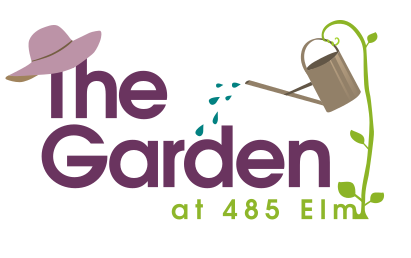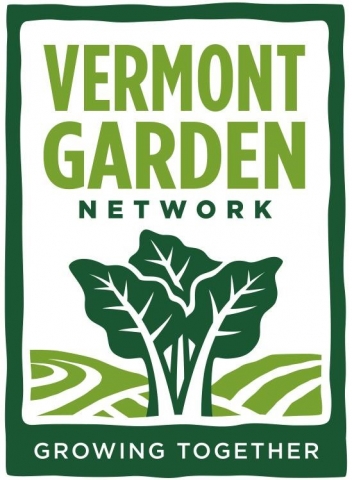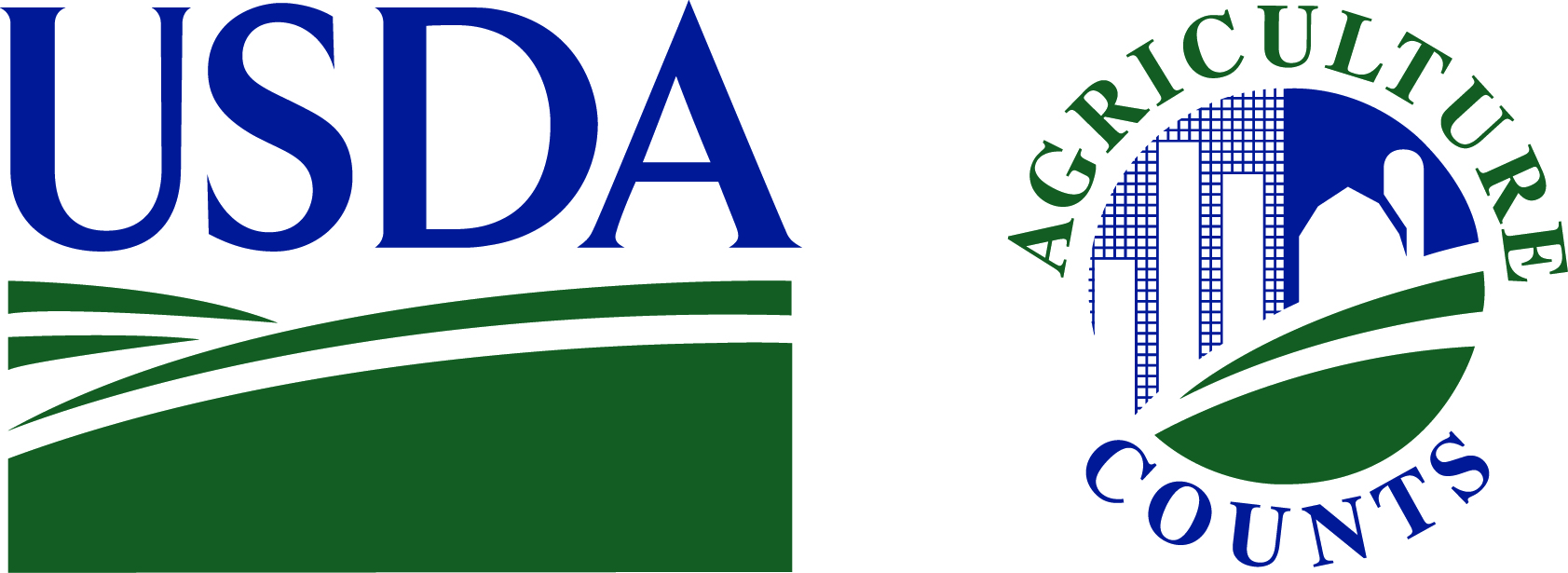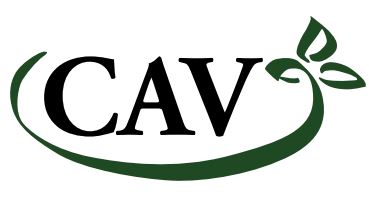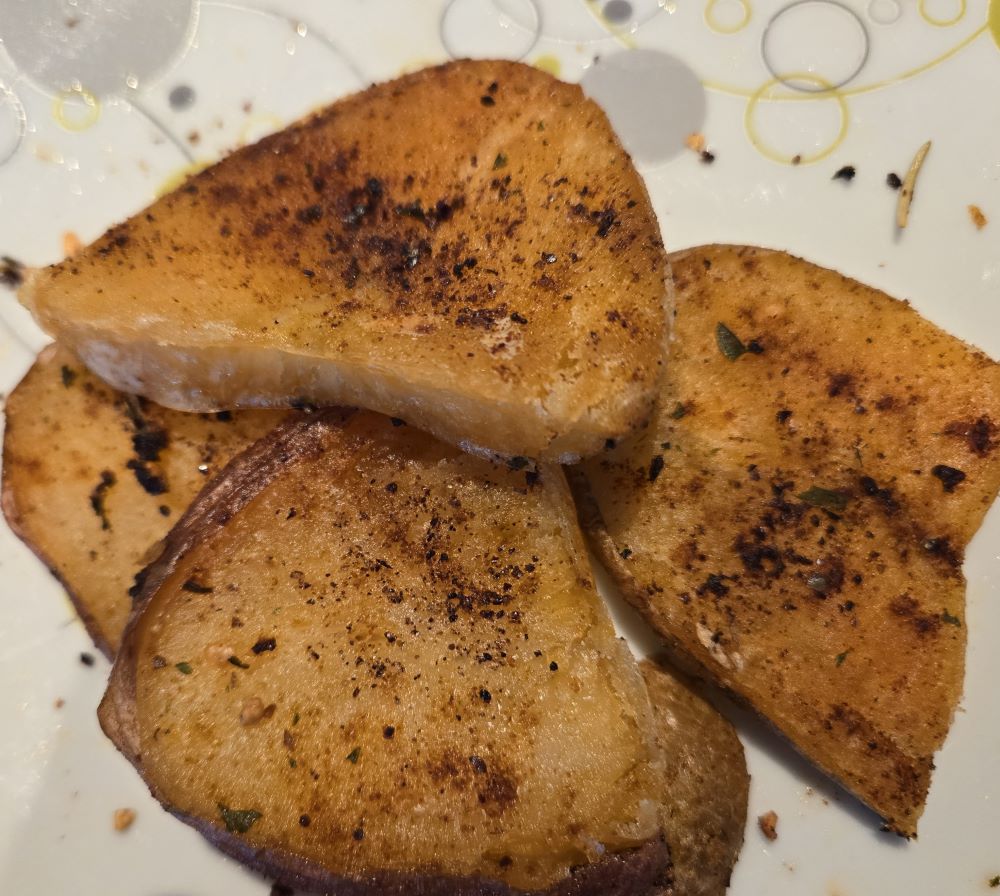
The timing was perfect. The night before potato planting, a gardener found the last of 2023’s blanched-and-frozen potatoes at the bottom of the chest freezer and made a delicious treat: Slice the potatoes thinly, brush with avocado oil, sprinkle with seasonings—in this case, salt, smoked paprika, thyme, and sumac powder—and roast on a pan at 400° for 30 minutes or until perfect.
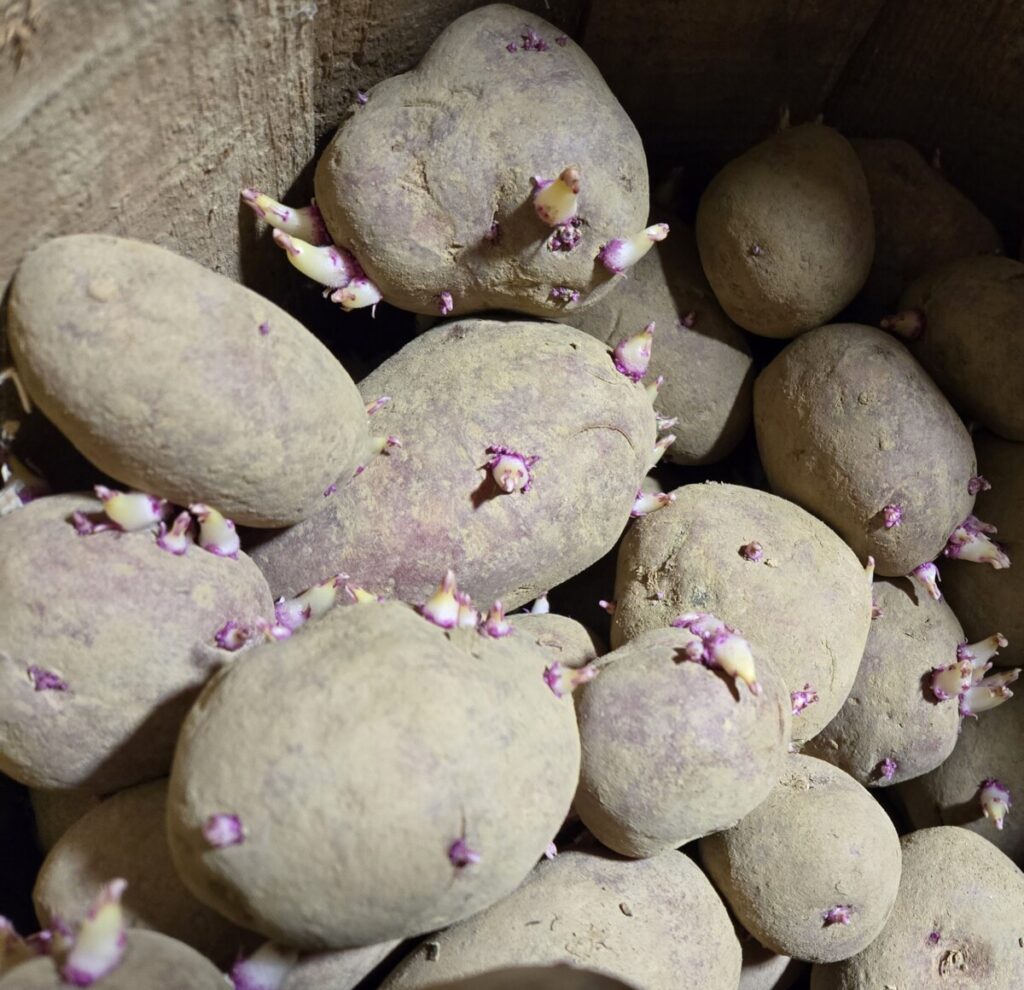
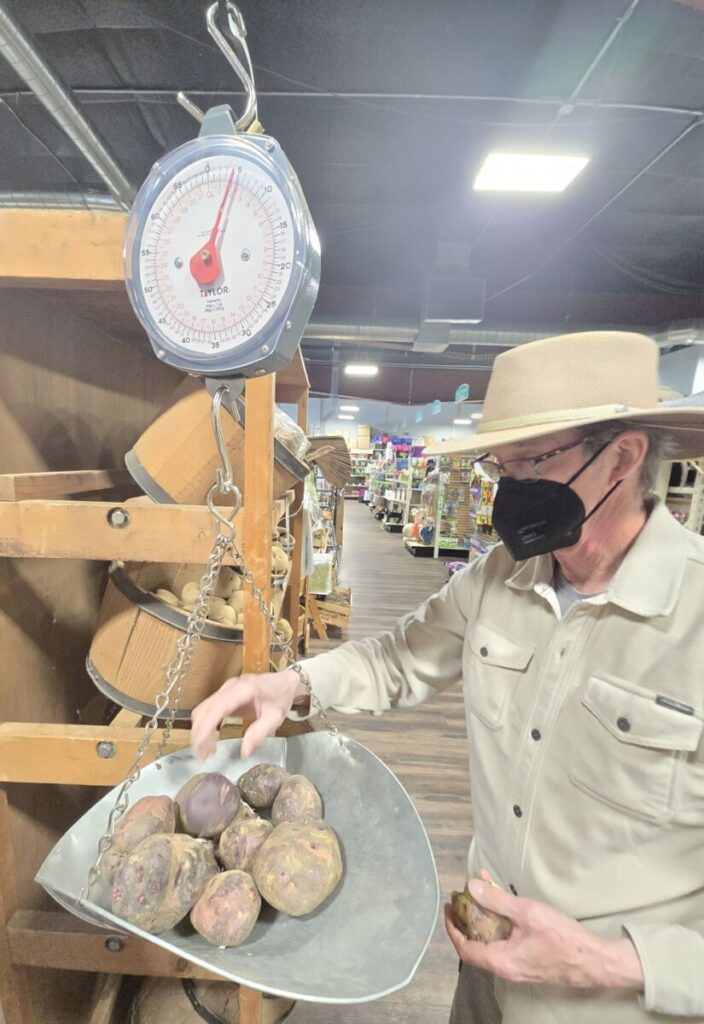
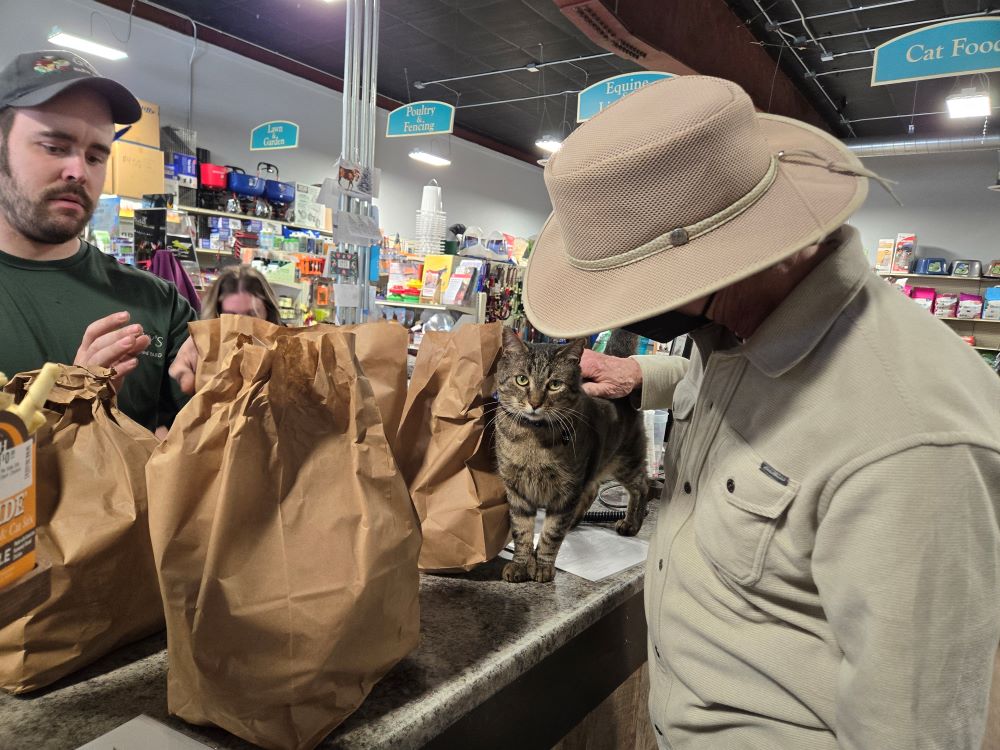
First, we bought potato seed—or is it seed potato?—from Guy’s Farm and Yard in Montpelier. With the help of Chester the shop kitty, we selected 15# of white Kennebec, 10# of red Norland, and 5# of purple Viking potatoes.
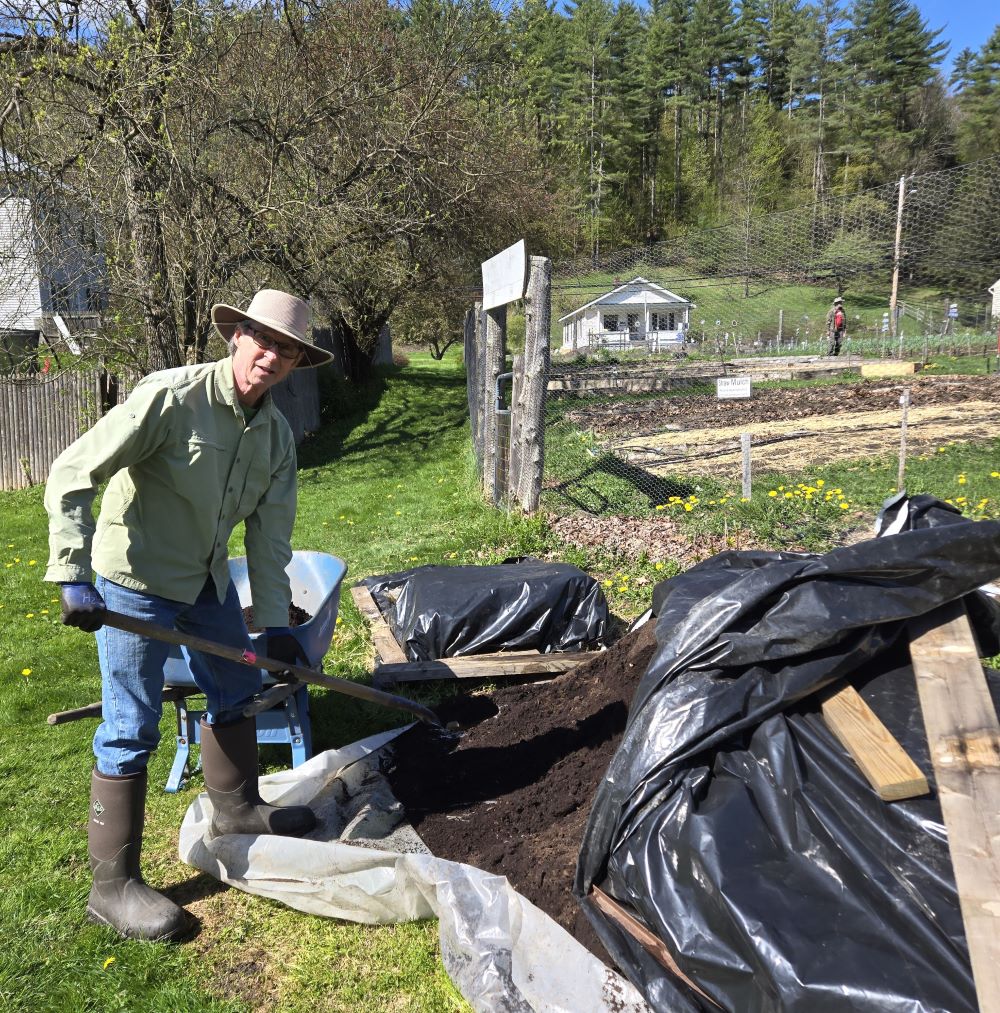
A gardener had loosened the potato bed’s soil the day before. Other gardeners dug trenches. This gardener loaded wheelbarrows with Vermont Compost’s Manure Compost to shovel into the trenches, feeding the soil where the potatoes will grow.
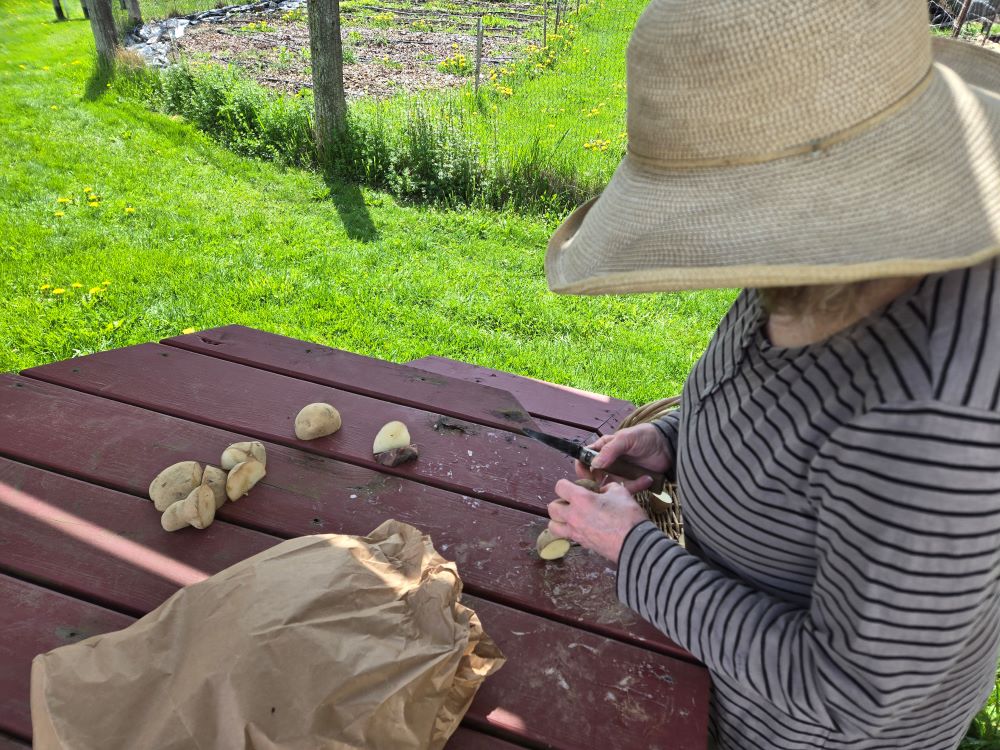
The next morning, a gardener cut up potato seed, aka potatoes that had developed visible eyes, into separate pieces, each piece (seed) with an eye or two.
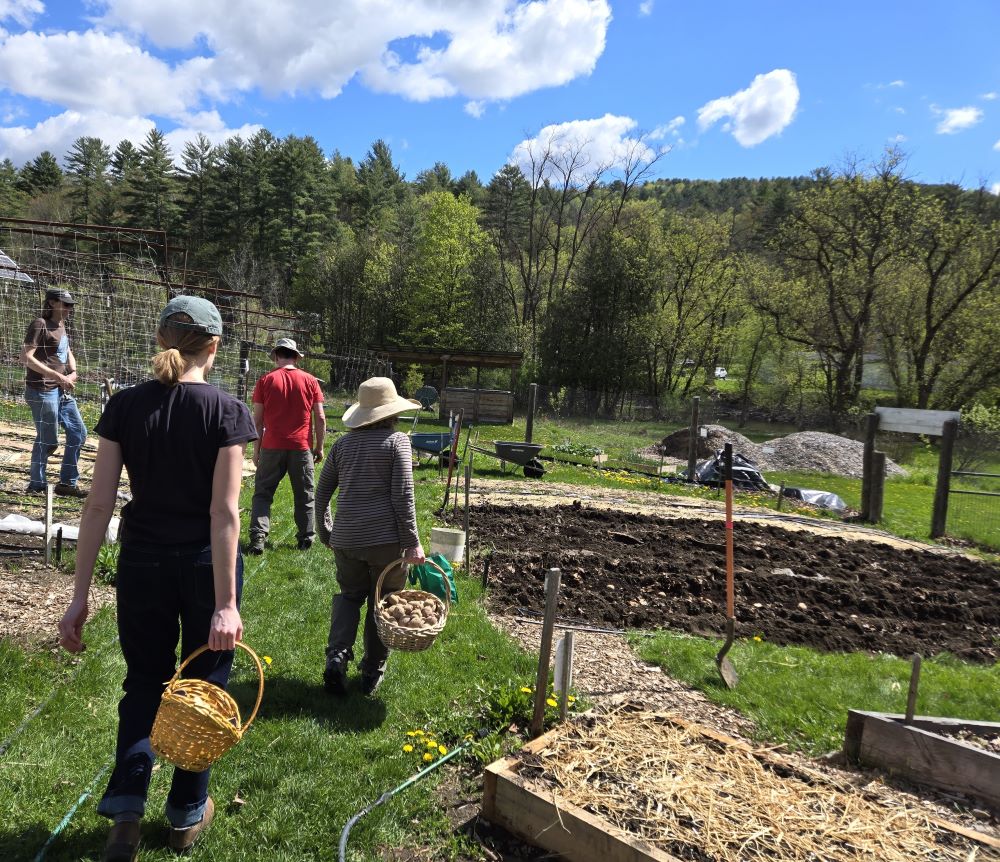
Gardeners carried the seed potatoes to the prepped bed.
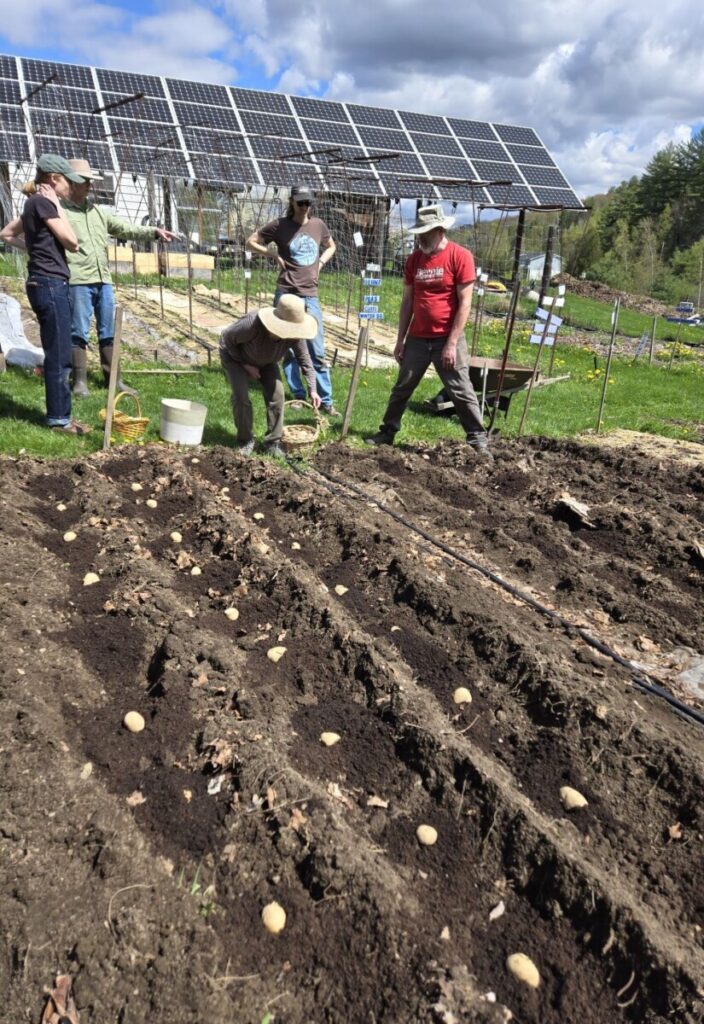
Potato planting commenced.
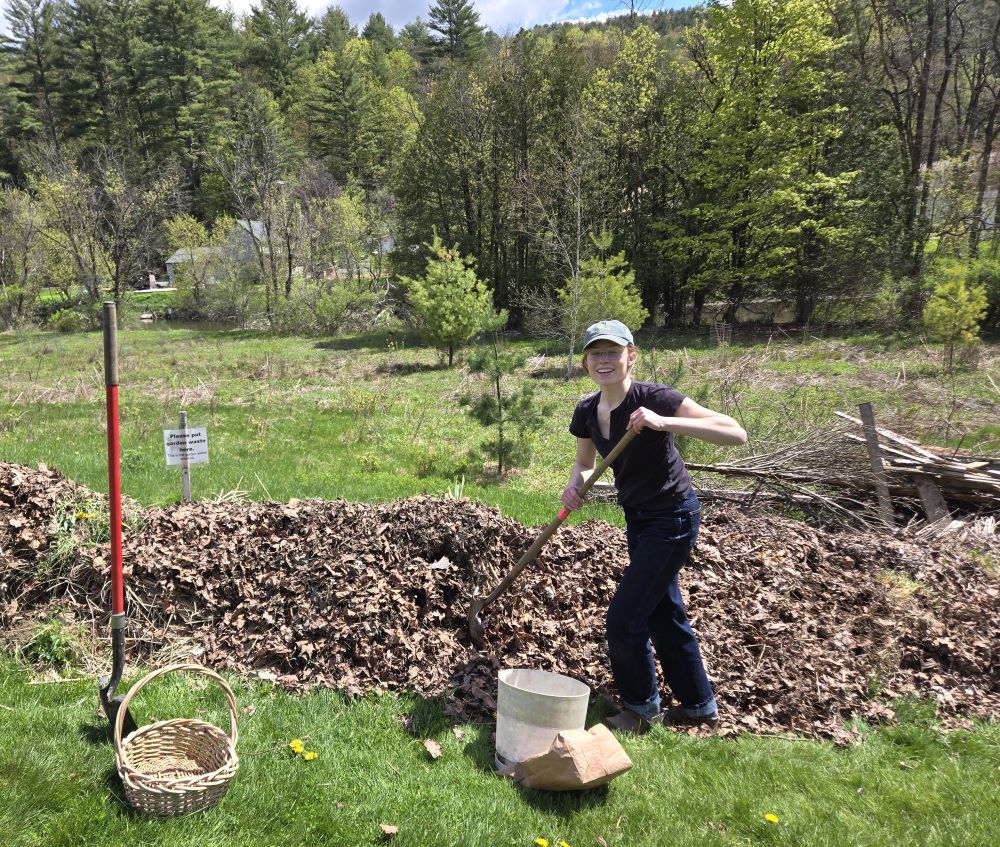
We’d bought so many beautiful seed potatoes that we ran out of space in the garden. Bright idea: Plant the overflow in the garden waste windrow! It’s full of nutrients from the plants breaking down, and we’d already dumped leaves on it when we cleared them from beds at the end of the winter.
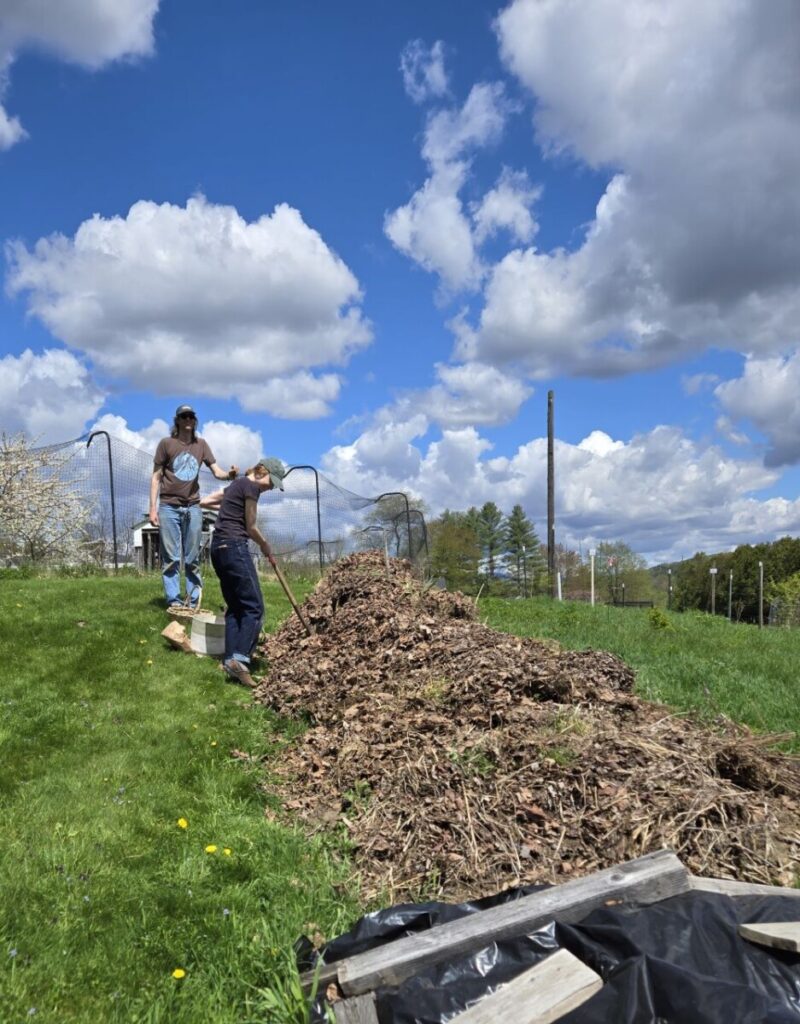
Growing potatoes in the long garden waste windrow means gardeners get to enjoy many more spuds.

We figured we’d better let people know that the windrow serving as a growing bed to avoid dumping large garden waste materials that might inhibit the potato plants’ growth.
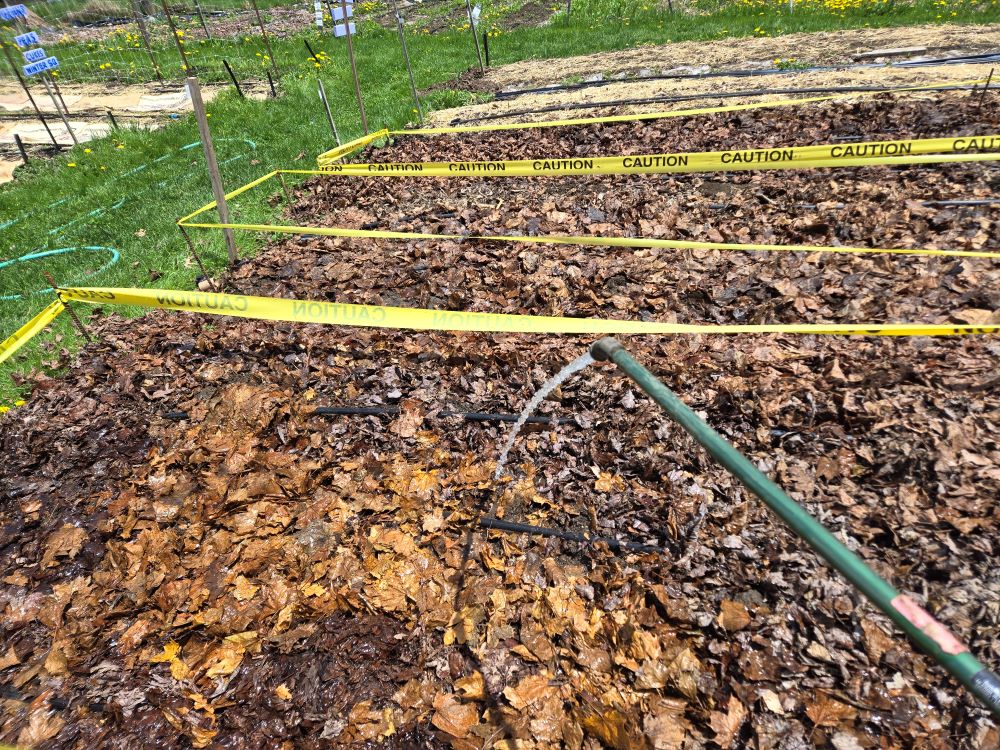
Planting means watering. Soon the deep-water drip-irrigation system will keep the growing potatoes happy without gardeners having to water them.
